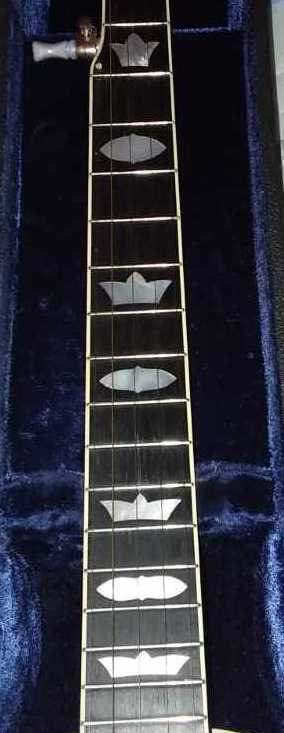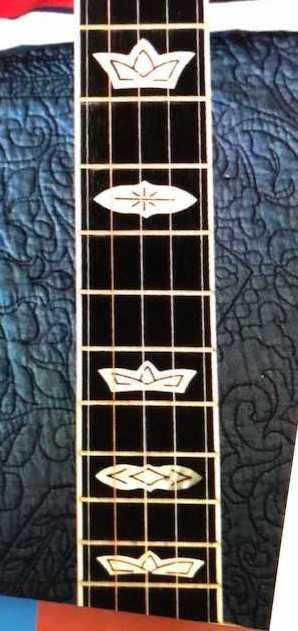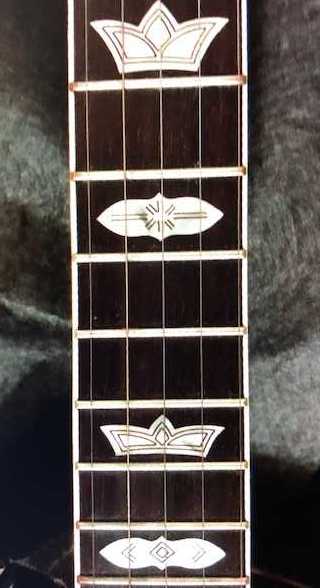
As the Vega banjo franchise changed hands among various owners during the 1970-1980 decades, the mother of pearl (MOP) features on their mid-range banjos underwent several iterations. In the Boston 1966 Vega catalogue, the “Pro II” series made its debut appearance with a new and innovative football-and-crowns mother of pearl inlay pattern on the fretboard (left) to replace the blockish inlays on the fingerboard of the preceding “Professional” banjo marketed in their 1963 catalogue. These same decorative but somewhat unadorned inlays were inherited as the fretboard appointments on the “new” VIP model that soon emerged in the 1968 Vega catalogue.
After C.F. Martin purchased the Vega brand in May of 1970, the VIP banjo line surged in popularity. A single-stripe engraving (below) was added to embellish the appearance of its MOP inlays. During the 1970-1979 Martin era, over six hundred VIP-5 string, tenor, and plectrum banjos were manufactured in Nazareth, PA.


In 1979, C.F. Martin sold the Vega franchise overseas to the Galaxy conglomerate which marketed their newly-acquired banjo lines in the USA via the TMC vendor (Targ & Dinner 20 Century Music Company). To upgrade the MOP pattern on their VIP series, a double stripe engraving (left) was implemented.
Galaxy went bankrupt in a few years, and Greg Deering purchased the Vega brand in 1989 to restore the franchise to greatness. The football-and-crowns fretboard ornamentation was not revived, and the history of this unique pattern of MOP inlay ended.

While local jam sessions have been on hiatus for several weeks in response to recent Covid-19 data, the BRC founder spends time with grandkids on the dock behind his workshop. Each youngster has a grandpa-built banjo in their home.
From the BRC: Be safe, be well, and be picking……or fishing.
P.S. In his workshop, the BRC founder has been listening to an audiobook of Tolstoy`s classic novel War and Peace, a prodigious narration of 55 hours duration. Only 18 hours of listening remain.

No Comments